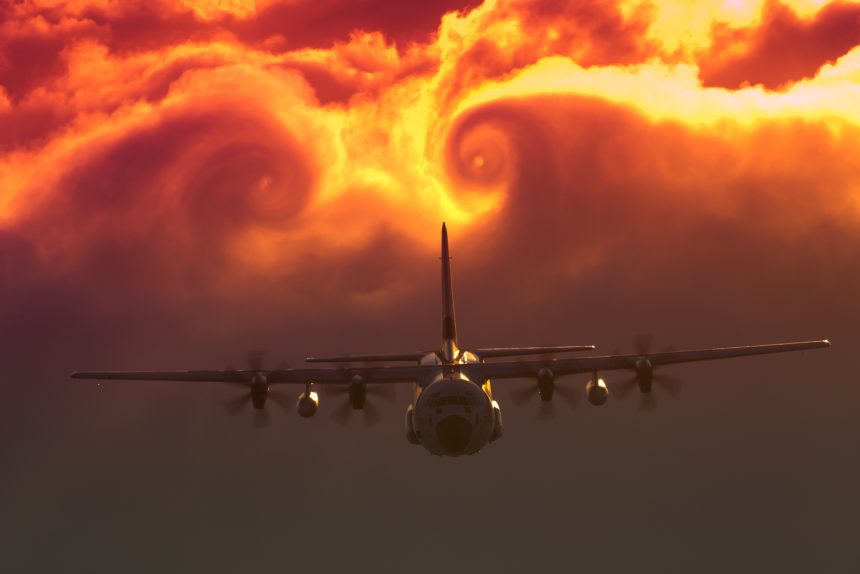This dramatic image shows a U.S. Coast Guard C-130J from Air Station Elizabeth City, NC. The USCG is flying a version of the C-130 since the first one was delivered to Air Station Elizabeth City in December 1959.
Noteworthy, wingtip vortices, have modified the shape of the layer of clouds through which the Hercules has just ran.
Vortices form because of the difference in pressure between the upper and lower surfaces of a wing.
Generally speaking, when the air leaves the trailing edge of the wing, the air stream from the upper surface is inclined to that from the lower surface, and helical paths, or vortices, result. The vortex is strongest at the tips and decreasing rapidly to zero nearing midspan: at a short distance from the trailing edge downstream, the vortices roll up and combine into two distinct cylindrical vortices that constitute the “tip vortices.”
The tip vortices trail back from the wing tips and they have a tendency to sink and roll toward each other downstream of the wing. Although they eventually dissipate at a certain distance from the wing, wingtip vortices cause additional downflow behind the wing and form the major component of wake turbulence that can be extremely dangerous.
A more detailed description of the wingtip vortices can be found on the centennial of flight website that provides additional data about the wake turbulence. The above description is loosely based on the one provided by both the above mentioned website and NASA.
Related Articles
- US Coast Guard HC-130J attending Titanic ceremony diverted to rescue a sinking ship (theaviationist.com)









